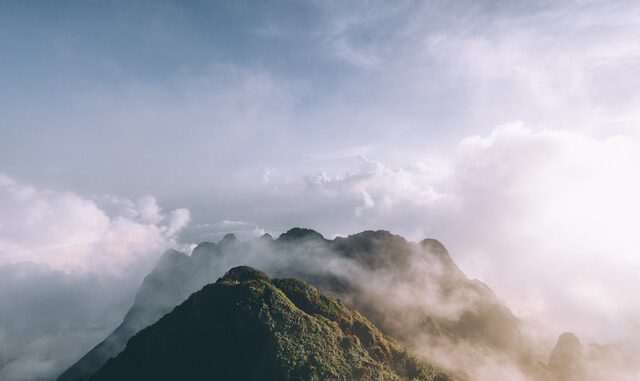
Vietnam is home to some of the most breathtaking landscapes in the world, and Sa Pa, nestled in the northern highlands, offers an unparalleled hiking experience. Known for its rugged mountain ranges, lush rice terraces, and vibrant ethnic communities, Sa Pa is a dream destination for trekking enthusiasts. Whether you are an experienced hiker or a beginner looking for a scenic adventure, this guide will take you through the best hiking trails in Sa Pa, ensuring a memorable journey through Vietnam’s majestic mountains.
Why Sa Pa is a Hiker’s Paradise
Sa Pa, located in Lào Cai Province, boasts an elevated terrain that reaches above 1,500 meters, providing panoramic views of the Hoàng Liên Son Mountain Range. The region experiences a cool climate, making it an ideal escape from Vietnam’s typically hot and humid weather. With trails leading through picturesque valleys, cascading waterfalls, and hill tribe villages, every hike in Sa Pa offers a blend of natural beauty and cultural immersion.
Best Hiking Trails in Sa Pa
1. Fansipan Mountain – The Roof of Indochina
- Distance: 12 km (one way)
- Difficulty Level: Challenging
- Estimated Time: 2-3 days
The ultimate trek in Sa Pa is the Fansipan Mountain climb, standing at 3,147 meters, making it the highest peak in Indochina. This demanding trek takes hikers through dense forests, steep inclines, and rocky paths, requiring endurance and preparation. For those seeking a quicker ascent, a cable car is available, but nothing beats the satisfaction of reaching the summit on foot, where stunning 360-degree views await.
2. Cat Cat Village Trek – A Cultural Experience
- Distance: 3 km
- Difficulty Level: Easy
- Estimated Time: 2-3 hours
For a more relaxed trek, the Cat Cat Village trail is perfect for those who want to experience the rich traditions of the Hmong ethnic group. This scenic route winds through verdant rice paddies, bamboo forests, and waterfalls, leading visitors to local markets, traditional stilt houses, and handicraft workshops. It’s an ideal introduction to the unique culture of Sa Pa’s indigenous people.
3. Muong Hoa Valley – The Iconic Rice Terraces
- Distance: 10-12 km
- Difficulty Level: Moderate
- Estimated Time: 5-6 hours

Arguably one of the most picturesque hikes in Vietnam, the Muong Hoa Valley trek takes hikers through rolling rice terraces, rustic villages, and ancient rock formations. This valley is home to several ethnic minority groups, including the Hmong, Dao, and Tay, who have cultivated the landscape for centuries. The best time to visit is during September and October, when the rice terraces turn a stunning golden hue.
4. Ta Van Village Trek – A Journey Through Ethnic Communities
- Distance: 8-10 km
- Difficulty Level: Moderate
- Estimated Time: 4-5 hours
This trek offers a deeper dive into local life, with routes passing through the Lao Chai and Ta Van villages. Along the way, visitors can interact with Hmong and Dzay families, learning about their customs and way of life. The landscapes are a mix of river valleys, wooden bridges, and terraced rice fields, making this trail both visually and culturally enriching.
5. Silver Waterfall & Love Waterfall Trek – A Refreshing Escape
- Distance: 4 km
- Difficulty Level: Easy
- Estimated Time: 2-3 hours
For those seeking a short and rewarding trek, the Silver Waterfall and Love Waterfall hike is a must. The trail leads to cascading waterfalls surrounded by lush greenery, offering a tranquil escape from the bustling town. The legend of Love Waterfall adds a mystical element to this already enchanting destination.
Best Time to Visit Sa Pa for Hiking
The best time to hike in Sa Pa depends on the experience you seek:
- March to May: Ideal for pleasant weather and blooming flowers.
- September to November: The best season for golden rice terraces and clear skies.
- December to February: Offers a chance to see snow-covered peaks and experience Sa Pa’s unique winter landscape.
Essential Tips for Hiking in Sa Pa
- Wear Proper Hiking Gear: Good trekking shoes, rainproof jackets, and layered clothing are essential.
- Hire a Local Guide: For longer treks, hiring an experienced guide enhances safety and provides deeper cultural insights.
- Stay Hydrated & Carry Snacks: Mountain treks can be physically demanding, so carry enough water and energy bars.
- Respect Local Customs: When visiting villages, dress modestly and seek permission before photographing locals.
- Be Prepared for Weather Changes: Sa Pa’s weather can shift quickly; always carry a waterproof cover for your gear.
Where to Stay in Sa Pa
Sa Pa offers a variety of accommodation options, from luxury resorts to budget-friendly homestays. Staying in a homestay with a local family enhances the experience, offering authentic meals and cultural exchanges. Some recommended stays include:
- Topas Ecolodge – A luxurious retreat with stunning mountain views.
- Sapa Clay House – A beautiful eco-friendly stay with traditional designs.
- Local Homestays in Ta Van Village – Experience genuine ethnic hospitality.
Conclusion
Sa Pa’s hiking trails offer more than just breathtaking scenery; they provide an opportunity to immerse yourself in Vietnam’s diverse cultures and untouched landscapes. Whether you’re scaling Fansipan’s peak, strolling through Muong Hoa Valley, or exploring ethnic villages, every step in Sa Pa is an unforgettable adventure. Plan your trip wisely, embrace the spirit of adventure, and let Sa Pa’s majestic mountains leave you with memories to last a lifetime.